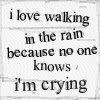A Sticky Situation
The name Scotch Tape actually resulted from an ethnic slur foisted upon manufacturers of the tape—although the product does not have any connection with Scotland or the Scottish.
In 1925, the automobile industry, eager to satisfy American's craving for two-tone cars, had difficulty making a clean, sharp edge where one color met another. Richard Drew, a laboratory employee primarily involved with abrasives used to make sandpaper at the Minnesota Mining and Manufacturing Company (better known as 3M), developed a two-inch wide strip of paper tape coated with a rubber-based adhesive. To cut costs, the tape was coated with only a strip of glue one-quarter inch wide along the edges, instead of covering the entire two-inch width. Unfortunately, the tape failed to hold properly, and the painters purportedly told the 3M salesmen to "Take this tape back to those Scotch bosses of yours and tell them to put adhesive all over the tape, not just on the edges." The 3M company complied, but when the salesman returned to the automobile paintshop, a painter derogatorily asked him if he was still selling that "Scotch" tape, launching a tradename based on an ethnic slur denoting stinginess. The name, like the improved tape, stuck.
In 1929, the Flaxlinum Company asked 3M to develop a water- and odor-proof tape to seal the wrapping on insulation slabs in railroad refrigerator cars. Drew coated Du Pont's new moisture-proof cellophane with a rubber-based adhesive, which, while not strong enough for insulation slabs, was marketed as Scotch Tape to the trade as "the only natural, transparent, quick seal for 'Cellophane.'"
After cows ate the resin-coated fabric on the rudder section of a 1946 Taylor craft airplane, the plane's owner, Edward Bridwell, used Scotch Tape to repair it.
Ornithologists have used Scotch Tape to cover cracks in the soft shells of fertilized pigeon eggs, allowing the eggs to hatch.
Landlords in Bangkok, Thailand, have used Scotch Tape to repair cracks in the walls of tenants' apartments.
Because the end of Scotch Tape tends to stick to the roll, camouflaged by its transparency, John A. Borden, a 3M sales manager, invented the tape dispenser with a ledge to keep the end of tape away from the roll and incorporating a serrated edge to cut the tape.
During the Depression, banks first used Scotch Tape to mend torn currency.
During World War II, 3M stopped selling Scotch Tape to civilians because the military wanted it all. At least one American munitions factory used transparent tape as a conveyor belt to move bullets.
During World War II, England's Ministry of Home Defense used more than ten million yards on windows to minimize flying glass during air raids.
In 1961, 3M engineers perfected the tape so it would never yellow or ooze adhesive. Scotch Magic Transparent Tape, with its matte finish backing, disappears when applied. It's water resistant and you can write on it.
Scotch Tape has been used as an anti-corrosive shield on the Goodyear Blimp.
The Scottish tartans used to designate Scotch Tape were exclusively designed for the 3M Company by New York color consultant Arthur Allen in the 1940s.
Scotch Tape, the best selling tape of any kind in the world, is found in virtually every home and office in the United States.
Copyright © 2004 Joey Green. All rights reserved. "Scotch" is a registered trademark of 3M. http://www.wackyuses.com/wf_scotch_tape.html


0 Comments:
Post a Comment
<< Home